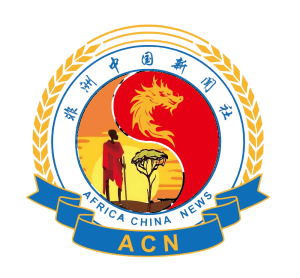Kenya’s Standard Gauge Railway (SGR), built with China’s support, has been a landmark infrastructure project in East Africa. Since its launch, it has transformed Kenya’s transport system and sparked discussions on its economic, social, and environmental impacts. Today, as the SGR stretches from Mombasa to Nairobi and Naivasha, it’s worth taking a closer look at what it has achieved so far and the lessons it offers.
Economic Impact: Boosting Trade and Connectivity
The SGR was designed primarily to enhance trade within Kenya and between neighboring countries. Since its operation began, it has significantly cut down the time and cost of transporting goods. Cargo that previously took days to move from Mombasa to Nairobi now arrives in just a few hours. This efficiency has reduced logistics costs for businesses, leading to price reductions in some sectors.
Moreover, the railway has attracted more businesses to Kenya’s inland regions. For example, industrial parks have sprung up around the Naivasha area, close to the SGR’s route, creating new opportunities for local businesses. This economic boost has also been a welcome development for Kenya’s manufacturing and agricultural sectors, which rely heavily on reliable transport networks.
However, there’s a flip side. Critics argue that the SGR project has added significantly to Kenya’s debt burden. The project, largely funded by Chinese loans, has raised concerns about sustainability, as Kenya now faces the challenge of repaying substantial amounts while managing its economy.
Employment and Skills Transfer For Social Impact
The SGR project provided thousands of jobs for Kenyan citizens during its construction phase, contributing to the local economy and providing skills training for many workers. Kenyan labourers, engineers, and technicians had opportunities to work closely with Chinese professionals, gaining valuable expertise in railway construction and operations. This skills transfer is expected to benefit Kenya’s infrastructure sector in the long term.
Post-construction, the railway has also created permanent jobs in operations, maintenance, and administration. Workers at SGR stations, along with train conductors and security personnel, continue to benefit from the steady employment the railway provides. The jobs have brought economic relief to many families and improved living standards for some communities along the SGR route.
Yet, not everyone feels the benefits. Some communities, particularly pastoralists and farmers, have faced disruptions due to land acquisition and restricted access to certain areas. Compensation issues have led to dissatisfaction, with affected residents arguing that the benefits haven’t been evenly distributed.
Mixed Outcomes Over Environmental Impact
Environmentally, the SGR has brought both positive and negative effects. On the positive side, the railway has reduced the number of heavy trucks on Kenya’s highways, easing road congestion and lowering pollution levels from vehicle emissions. This reduction in road traffic has improved air quality along major highways, positively impacting public health in urban areas.
However, the construction of the railway itself raised environmental concerns. The route crosses several wildlife habitats, including Tsavo National Park. Conservationists worried about the potential impacts on wildlife, especially during the railway’s construction, which included creating tunnels and bridges to allow animal movement. While some measures were implemented to minimize disruption, such as building underpasses for wildlife, environmentalists continue to monitor the long-term effects on animal migration and ecosystem balance.
Kenya’s SGR was intended to be part of a regional network, connecting Kenya with neighboring Uganda, Rwanda, and South Sudan. Although the SGR has not yet reached these countries, the existing line has made it easier for Kenya to import goods efficiently, reinforcing its position as a regional hub. This progress points to the potential for enhanced East African integration if the railway network is extended as originally planned.
Nonetheless, the railway project’s delay in reaching neighboring countries has highlighted the challenges of cross-border coordination and financing in major infrastructure projects. Neighboring nations, still assessing the SGR’s economic feasibility, are cautious about committing to similar projects without strong assurances of return on investment.
A Mixed Bag of Successes and Challenges
Overall, Kenya’s SGR has undeniably transformed transportation within the country, bringing with it economic advantages, job opportunities, and some environmental benefits. However, these successes come with challenges, including debt management, uneven benefits among communities, and environmental considerations.
The SGR’s journey highlights the complexity of balancing ambitious infrastructure development with long-term sustainability and social equity. As Kenya continues to evaluate the impact of the SGR, the lessons learned will be valuable for other African nations considering similar projects. The SGR stands as a testament to the potential—and the caution—that comes with modern infrastructure in today’s interconnected world.




